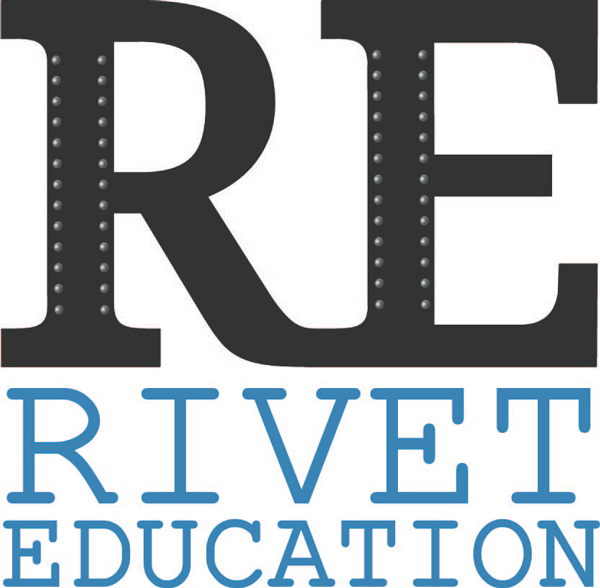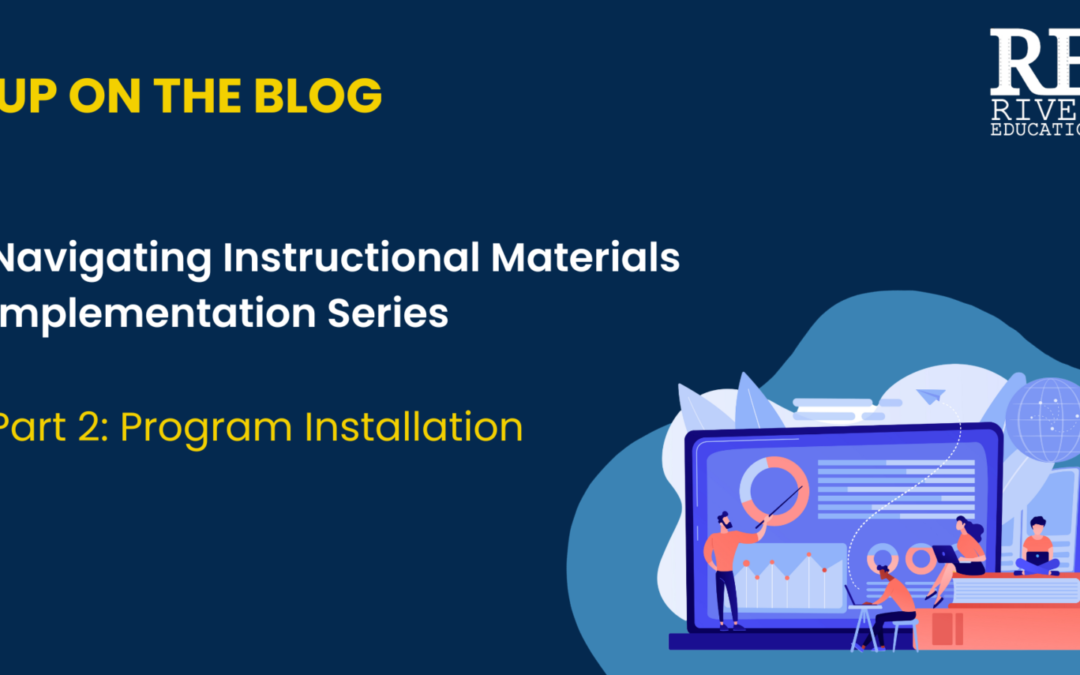This blog post is the second in our “Navigating the Instructional Materials Implementation Journey” series, exploring the five implementation phases of high-quality instructional materials, or HQIM. For each phase, we will explore the steps each level in the K-12 system (district leaders, school leaders, and teachers) must take to maximize the full benefits of their HQIM.
In September, we discussed the exploration phase in the instructional materials implementation journey, where stakeholders come together to review and select a new curriculum. Once the curriculum is adopted and purchased, the next phase of the journey involves creating the conditions for a successful curriculum launch so that school leaders, teachers, and, ultimately, students and families experience success. At Rivet Education, we call this phase Program Installation.
As districts prepare for the initial implementation of HQIM, the main focus is establishing and/or updating the processes and procedures that will support this initial phase. In this post, we will highlight the important steps of the Program Installation phase through three lenses: the district implementation team, the school implementation team, and classroom teachers.
District Leaders and the District Implementation Team
With the ever-changing realities of operating school systems, even the most well-laid plans for implementation can be derailed. This is why it’s important that district leaders establish a district implementation team to keep the process on track. This team is responsible for ensuring that school leaders, classroom teachers, and support staff are well-informed and trained in the content and pedagogical shifts required of the new curriculum. They also verify that there’s adequate time to become familiar with the new materials before the start of a new school year.
During the Program Installation phase, both district leaders and the implementation team begin facilitating the proper conditions for strong implementation by:
- Ensuring HQIM are adopted, purchased, and distributed, including removing old materials from all the schools and classrooms
- Establishing and investing stakeholders in a plan for materials implementation that connects to the district’s vision for excellent, equitable teaching and learning created during the adoption process. This investment is established through the initial curriculum-based professional learning provided to teachers and leaders on the new HQIM
- Creating the proper conditions for strong implementation by examining district resources, structures, processes, and policies, as well as making necessary changes to ensure all students can access the curriculum equitably
School Leaders and the Implementation Team
When the new HQIM is selected, school leaders should establish a school implementation team to oversee their materials’ initial launch and ongoing implementation. This team is responsible for ensuring that teachers have the time, resources, and support needed to skillfully use their HQIM so that all students can master grade-level content.
During the Program Installation phase, school leaders and the implementation team begin creating the proper conditions for strong implementation by:
- Working with teachers, staff, and families to invest in a vision for materials implementation that aligns with excellent, equitable teaching and learning. This investment is established through the initial, curriculum-based professional learning provided to teachers and leaders on their HQIM.
- Creating the enabling conditions for strong implementation by adjusting school and class schedules to accommodate the new curriculum, as well as establishing common planning time for teachers within their grade level and content area
- Defining and communicating clear expectations for strong, equitable implementation and planning throughout the school year
Teachers
If everything that we have discussed up to this point goes as planned, teachers should feel well-equipped to use their new HQIM on day one of the school year. This not only means that they are confident in the materials and their ability to teach them, but they have weekly opportunities to receive feedback on their practice and collaboratively plan with grade-level or content areas peers.
During the Program Installation phase, teachers:
- Familiarize themselves and organize their materials
- Engage in professional learning (e.g., workshops, PLCs, coaching) that builds their understanding of what excellent, equitable teaching and learning looks like and how their HQIM supports them in achieving that vision
- Prepare for the shifts in expectations, unit and lesson preparation, and/or grading accompanying materials implementation
- Communicate the changes in the curriculum to students and families, ensuring that it leaves them feeling prepared and excited for the year to come
Summary
The Program Installation phase is complex and vital to the long-term success of a new HQIM. Let’s look at some helpful tips to make this process more effective.
- Invest stakeholders in the new curriculum. Remember that knowledge is power. When stakeholders understand how your HQIM connects to your academic vision and will ensure students master grade-level content by the end of the school year, they are more likely to be invested in its long-term success. Engage school leaders and lead teachers early and often, to ensure they understand the curriculum’s approach and design, serving as ambassadors for the materials in their schools.
- Ensure teachers have enough time to receive meaningful, initial training on their HQIM. You can’t hand teachers a new curriculum one week before school starts
and expect them to use it skillfully. For HQIM to be effective, teachers need adequate time and professional learning to feel confident using their curriculum. However, this doesn’t mean you’re off the hook if you plan a two-day workshop to help teachers understand how to use the curriculum. It’s important to ensure that your professional learning plan includes weekly opportunities for teachers to collaboratively plan using their HQIM and receive feedback on their practice. We will get more into this in our next blog, so stay tuned!
- Set and communicate clear expectations for implementation. As our Co-founder here at Rivet always says, “The communication is as important as the effort itself.” Launching an HQIM requires major changes at each level of the K-12 system, which must be communicated early and often. Once a new HQIM is adopted, district and school implementation teams must communicate the implementation plan, expectations to skillfully use the materials, and the process for providing feedback to district and school leaders on their use and impact. Don’t forget this last part – getting open and honest feedback on the curriculum in year one is extremely important.
Even with these helpful tips, this process can seem overwhelming. Here are some additional ways in which you can build your knowledge of the program installation phase:
- Register for Rivet Education’s Professional Learning Power Hour on October 19, where we will sit down with Achievement Network to explore how they helped a client successfully install a new curriculum in their district.
- Visit the Professional Learning Partner Guide to view our list of certified providers who can help launch your new curriculum successfully. Each provider has been vetted for their expertise in specific curricula and change management for adults.
Want to build your knowledge of the other stages of HQIM implementation? Stay tuned to our News & Events page for our upcoming blogs and PL Power Hour this winter, where we will explore the remaining three phases of the HQIM implementation journey.

